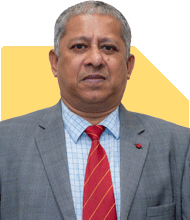I am 58 years old. Plan to retire in 2 years. Have 50 lacs in mutual funds.
30 in hdfc balanced advantage.fund dividend option.
How can i generate 50000 in SWP. Is it possible?
Ans: You have built Rs.50 lakhs in mutual funds. That’s a good foundation. You are also two years away from retirement. These steps show foresight and responsibility.
Many people reach retirement without preparation. But you have built an investment base. That deserves appreciation.
Now, let’s look at whether a monthly SWP of Rs.50,000 is possible.
Understanding Your Current Portfolio Structure
You mentioned Rs.30 lakhs is in one fund — a balanced advantage fund. It’s in the dividend option.
The rest, Rs.20 lakhs, is assumed to be in other mutual funds. Let’s review what this structure means.
Balanced Advantage Funds (BAF)
These funds move between equity and debt.
They aim to reduce risk during volatility.
Good for conservative to moderate investors.
Suitable for retirees seeking lower risk.
May give stable but not very high growth.
Dividend Option – Not Ideal
Dividend is not fixed income.
It depends on fund profits and SEBI rules.
May be stopped anytime.
Tax is deducted at source (TDS).
You lose the power of compounding.
So, staying in dividend option is not wise. You are not in control of the income.
You Want Monthly Income of Rs.50,000 Through SWP
Let’s see if this is possible and sustainable.
Rs.50,000 per month means Rs.6 lakhs per year. From Rs.50 lakhs, this is 12% annual withdrawal.
Now we assess the safety of this withdrawal rate.
Why 12% Withdrawal Rate is High
Mutual funds don’t give fixed returns.
Equity funds can give 10-12%, but not guaranteed.
Debt and hybrid funds give 6-8% usually.
If you withdraw more than growth, capital reduces fast.
In bad years, portfolio value may drop sharply.
So, withdrawing 12% yearly is risky. It may not sustain for 20+ years.
Better Withdrawal Strategy for Your Case
To make your money last longer, try these:
Withdraw only 6-7% yearly, not 12%.
Keep part of portfolio in safer debt funds.
Keep equity funds for long-term growth.
Start SWP from debt side, not equity side.
Review portfolio yearly with a Certified Financial Planner.
Delay full SWP till after retirement, if you can.
With Rs.50 lakhs, a monthly SWP of Rs.30,000 is more realistic. That is Rs.3.6 lakhs per year, about 7.2% withdrawal. This is safer.
How to Structure Your Portfolio for Retirement
At 58, you need less risk and more peace. Structure is very important.
Here’s a suitable approach:
Debt Funds: 40% (Rs.20 lakhs)
Balanced Advantage / Conservative Hybrid: 30% (Rs.15 lakhs)
Equity (Flexi or Large cap): 30% (Rs.15 lakhs)
This creates a mix of growth and safety. You can draw monthly income from debt funds.
How to Generate SWP from This Structure
Start Systematic Withdrawal Plan (SWP) from debt funds.
Keep 3 years of expected income in safe funds.
That’s Rs.18 lakhs for Rs.50,000 per month for 3 years.
This protects from market shocks.
While you draw income, equity portion keeps growing for future.
This way, you don’t sell equity when markets fall. That protects your capital.
Why Direct Funds May Not Suit You Now
You didn’t mention whether your funds are direct or regular. But at this stage of life, direct funds can be dangerous.
Disadvantages of direct funds now:
You manage everything alone.
No guidance on withdrawals.
No emotional support during market fall.
Risk of picking wrong funds.
Tax planning becomes tricky.
Better to invest through regular funds with a Certified Financial Planner.
You will get:
Correct asset allocation
Help in SWP planning
Regular reviews and rebalancing
Peace of mind in retirement
Avoid Index Funds in Retirement
Some may suggest index funds for retirement. But this is not wise.
Problems with index funds:
No protection in market fall
No active risk management
Not designed for income
Not good for capital safety
Instead, use actively managed funds. They adjust based on market and economic changes. Safer for retirees.
Consider These Important Retirement Rules
When building retirement income, keep these principles in mind:
Do not chase high returns.
Safety and stability matter more.
Don’t withdraw from equity during market dip.
Don’t invest in ULIPs or endowment plans now.
Don’t rely on dividends for income.
Avoid annuities, they give poor returns and no flexibility.
Always keep emergency fund ready.
Tax Implications on SWP
With SWP, you are redeeming units. This triggers capital gains.
Latest tax rules for equity funds:
LTCG above Rs.1.25 lakh per year taxed at 12.5%
STCG is taxed at 20%
For debt funds:
Both LTCG and STCG taxed as per your income slab
So, SWP from equity may give lower tax. But only if holding is more than one year.
From debt funds, tax can be higher. Plan SWP from long-term holdings first. Also, stagger redemptions smartly.
A Certified Financial Planner will plan redemptions tax-efficiently.
Role of Your Spouse in This Planning
Check if any part of investment is in your spouse’s name.
If not, shift some. This helps split income and save tax.
Also, if your spouse is younger, invest more in their name. This increases investment horizon.
Other Income Sources Must Be Considered
Don’t depend only on mutual funds. Check these too:
Pension
PF or EPF
Bank FDs or SCSS
Post Office income schemes
Rental income (if any)
Part-time work income
Mutual fund SWP should be one part of income, not the only one.
Review and Rebalance Regularly
Once SWP starts, review every year.
Look at:
Fund performance
Remaining capital
New needs
Tax changes
Market movements
Adjust accordingly. This ensures money lasts your full retirement.
Should You Exit LIC or ULIP Plans?
You didn’t mention any LIC, ULIP, or insurance policies. But if you have such investment policies, assess them.
If they give poor returns (below 5%), consider surrendering.
Then, reinvest that amount into mutual funds with a planned structure. This improves growth and liquidity.
Emergency Fund is Still Needed
Even in retirement, you need backup. Keep 6-12 months expenses in liquid funds or bank.
This prevents panic withdrawals from equity funds.
You can use:
Liquid mutual funds
Sweep-in fixed deposits
Savings accounts with auto FD feature
SWP Alone May Not Be Enough for Very Long Retirement
If you live till 85 or 90, inflation will eat into value.
Rs.50,000 today may not be enough after 15 years.
So, increase SWP slowly. Maybe 3% rise per year. But don’t overdraw early.
Also, invest some part in equity for growth. This beats inflation in long term.
Finally
You are well-prepared with Rs.50 lakhs in mutual funds.
Monthly SWP of Rs.50,000 is aggressive, but not impossible.
Reduce it to Rs.30,000 to make it more sustainable.
Avoid dividend option funds. Move to growth option.
Build a solid mix of equity and debt.
Start SWP from debt side to reduce market risk.
Review your plan every year with a Certified Financial Planner.
Avoid direct funds. Use regular funds for expert help.
Don’t invest in annuities or index funds.
Keep emergency fund separate and ready.
Plan tax-efficient withdrawals.
Make spouse part of the strategy.
This 360-degree plan ensures income, peace, and confidence in retirement.
Best Regards,
K. Ramalingam, MBA, CFP,
Chief Financial Planner,
www.holisticinvestment.in
https://www.youtube.com/@HolisticInvestment
























